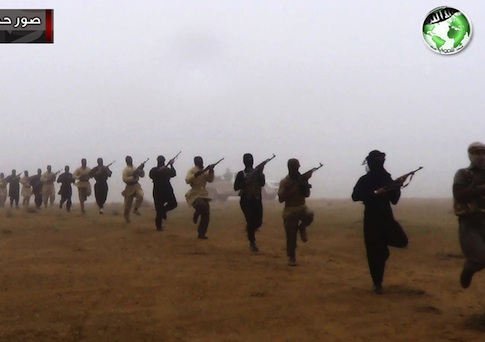Al Qaeda and its affiliates have grown more diffuse since the Sept. 11 terrorist attacks but still pose a grave threat to America’s national security and interests overseas, according to a new report.
The report released by the Bipartisan Policy Center (BPC) ahead of the attacks’ 12th anniversary notes that the CIA’s sustained campaign of drone strikes has killed more than 33 al Qaeda leaders in Pakistan since 2008.
However, new affiliates of the terrorist organization continue to spring up across the Middle East and Africa, such as al Qaeda in the Islamic Maghreb in Mali, Mauritania, and Niger, and Boko Haram in Nigeria. Two al Qaeda affiliates, Jabhat al Nusra and the Islamic State in Iraq, have also occupied large swaths of northern territory in civil war-torn Syria.
Al Qaeda and its allied groups maintain bases of operation in 16 different theatres today, more than before the Sept. 11 attacks and twice as many as five years ago, the report states.
"Yes we’ve weakened the al Qaeda core, and our high target drone program has been successful," said Bruce Hoffman, director of Georgetown University’s Center for Security Studies and co-author of the report, during a panel discussion at BPC.
"But what does that say when al Qaeda has been able to expand afield, more than double the areas just since five years ago? Obviously we need another strategy that doesn’t focus on one arm of al Qaeda but the entire movement."
Hoffman said the most concerning situation is in Syria, where al Qaeda "has hitched its fortunes" in a bid for revival.
Groups like Jabhat al Nusra have rebranded their image in the model of the Lebanese terrorist group Hezbollah by providing supplies such as food and water in an attempt to garner public support and institute Sharia law.
"I don’t think al Qaeda wants to necessarily take over the country," Hoffman said.
"What it wants to do is carve out safe havens and sanctuaries. That historically has always been the oxygen that al Qaeda breathes."
Syria has also become a training ground for dozens of foreign fighters from America and Europe, raising concerns that the fighters could use expertise gained from collaboration with the al Qaeda groups to commit terrorist attacks upon their return home, Hoffman said.
The report notes that U.S. indictments of individuals connected with jihadist terrorism have declined from more than 40 in 2009 to just six this year. The Tsnarnaev brothers, the perpetrators behind the Boston Marathon bombings, received scant assistance from groups overseas and were radicalized by the propaganda of jihadists like Anwar al-Awlaki, who was killed by a 2011 U.S. drone strike in Yemen.
Still, al Qaeda’s operations overseas suggest that groups have ambitions to attack the West in a more coordinated manner.
A remote conference between 20 senior al Qaeda leaders last month prompted the temporary closures of several U.S. embassies in the Middle East.
The report’s authors recommend that the U.S. government track the flow of arms to jihadists in Syria and the foreign fighters that join their ranks, as well as maintain a military presence in Afghanistan after the full withdrawal of combat troops by the end of next year.
Hoffman said the U.S. should remain engaged in volatile conflicts like Syria despite criticisms of past interventions in Iraq and Afghanistan.
"We should not let the past blind us or tether us to not looking coldly or soberly at what the threats are today," he said.
"No al Qaeda threat has ever stayed localized."
